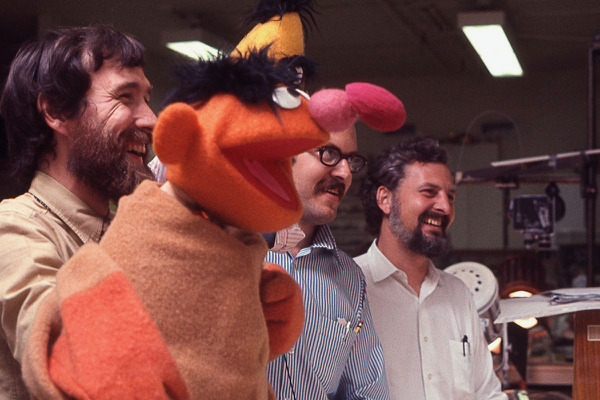Movie review by Greg Carlson
As tantalizing subject matter goes, the topic of Marilyn Agrelo’s “Street Gang: How We Got to Sesame Street” is as much a slam dunk as Morgan Neville’s “Won’t You Be My Neighbor?” Even though the 107-minute documentary sticks mainly to the contents of Michael Davis’s excellent 2008 book, which was published in anticipation of the show’s 40th anniversary in 2009, fans will not fault Agrelo’s tough editorial choices. The director has so much material from which to select, nothing in “Street Gang” feels wasted, out of place, or inessential. Viewers who grew up on the series will enjoy both a heady wave of childhood memories and a fresh, behind-the-scenes perspective on American television’s most influential children’s educational program.
The most devoted will have opinions on the right way to divide up the credit for the show’s success, and one of the most satisfying aspects of Agrelo’s film is the manner in which she thoughtfully considers so many of the players central to the development of “Sesame Street.” People will likely come for Jim Henson and Frank Oz and the Muppets, but stay for Joan Ganz Cooney and Jon Stone and Christopher Cerf and Joe Raposo and several original cast members whose anecdotes point to the scope and scale and ambition of the endeavor. Agrelo has a terrific feel for the various layers that define “Sesame Street,” and articulates the value of the iconoclastic, subversive, and progressive elements baked into the enterprise.
You won’t find any sustained critiques of well-meaning white liberalism in Agrelo’s film, but the director handles the socio-political dimensions of “Sesame Street” with clarity. Obviously, the diversity of the cast, the urban setting, the recognition and inclusion of the Spanish language, and the basic respect for multiculturalism were inspired by and adjacent to Joan Ganz Cooney’s feelings about the civil rights movement. Agrelo includes a reminder that “Sesame Street” was briefly dropped from Mississippi airwaves (see Jake Rossen’s “Mental Floss” article for a deeper dive). Not everyone shared the love.
And to underscore the adage that you can’t please all of the people all of the time, Agrelo lights up the story of Matt Robinson. Spanning only a few pages in the Davis book, Robinson’s importance to early “Sesame Street” could have been easily overlooked in the film. For seasons one through three, Robinson portrayed Gordon — the very first person introduced in the initial scene in the inaugural episode — with what Davis describes as “a near-perfect blend of urban cool and downtown sophistication.” Robinson would also create the controversial Roosevelt Franklin, the proud and soulful Muppet that, according to his critics, reinforced negative stereotypes.
Agrelo instinctively settles into a rhythm that ties together such a massive undertaking. Legendary milestones, like the handling of Mr. Hooper-portrayer Will Lee’s death, have been thoroughly covered elsewhere, but receive the proper and necessary respect one would expect. In 2014, Caroll Spinney was the subject of his own feature documentary, “I Am Big Bird,” but it’s impossible to imagine a wide-ranging history without addressing the one-two punch of the giant yellow avian and the irritable green trash-lover. Don’t be surprised if “Street Gang” leaves you wanting more — that’s often the mark of something special. I’m ready for full-length cinematic treatments of Henson’s infinitely creative experimental short films, the performances of the celebrated musicians and guest stars who stopped by to say hello, and a biography of Count von Count performer Jerry Nelson.
For the record, the Count is my favorite Muppet. I’d like to hear about yours.
